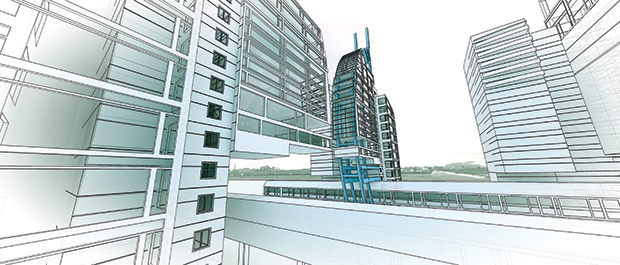Collaboration key for architect, contractor agreements
By: DOLAN MEDIA NEWSWIRES//July 30, 2014//

By Stephen Kelly
Dolan Media Newswires
In the flurry of a development project launch, it’s common for owners to not consider whether their architect and contractor agreements fit together well.
These agreements often are negotiated at different times in the development schedule, and it may not be obvious which terms in one affect those in the other. Discrepancies between the architect and contractor agreements, however, can affect the success of a project.
Here are five questions an owner should ask.
1. Are disputes heard in a single forum?
Perhaps the most common inconsistency in architect and contractor agreements is selecting different places to resolve disputes; for example, arbitration for the architect, court for the contractor. Inconsistent dispute resolution terms are a real danger to the owner, because they multiply the expense of litigation and potentially lead to conflicting results. For example, the arbitrator in an owner/architect arbitration decides a defect is the contractor’s fault, but the jury in an owner/contractor litigation decides it’s the architect’s fault, so the owner gets no relief.
To avoid this situation, the architect and contractor agreements should have identical dispute resolution terms, and the architect and contractor should be required to include these same dispute resolution terms in their subcontracts.
To further hedge against the risks of multiple forums, the owner should have the option in both agreements to resolve disputes in arbitration or court.
2. Is the contractor performing any work on a design-build basis?
Important elements of the project, such as the HVAC work, often are performed by the contractor on a design-build basis; in other words, the contractor furnishes the design and construction for that portion of the work.
The architect contract should make clear what role, if any, the architect has regarding design-build work. For example, the architect might furnish performance specifications.
On the flip side, the construction contract should make clear that the contractor, not the architect, is responsible for the design of the design-build elements. Without a clear assignment of roles, an owner runs the risk of creating a hole in design responsibilities.
3. Are the architect’s services consistent with the general conditions?
It’s common for construction contracts to contain a set of “general conditions” that describe the architect’s construction-phase role. The AIA A201 general conditions are a common example.
Owners should take care to ensure that the duties assigned to the architect in its agreement are consistent with those in the general conditions; for example, the architect’s role in reviewing the contractor’s work or the contractor’s shop drawings.
It also is important that an owner get the architect’s buy-off on how its duties are described in the general conditions; otherwise, those duties will not be binding.
4. Do I have adequate insurance coverage for design errors?
Adequate insurance coverage can be critical to protect the owner from defects or other problems with its project.
To make sure there’s adequate insurance for a project, an owner should consider the insurance coverage of its architect, its contractor and their subcontractors as pieces of one puzzle. To that end, if the project includes design-build work, the owner should ensure that the architect, the contractor and their design subcontractors carry professional liability insurance.
5. Has the architect reviewed the contractor’s clarifications and assumptions?
When negotiating a contract price, contractors may submit a list of clarifications and assumptions that the contract price is based on, and contractors may also want this list included in their contract.
Because these clarifications and assumptions often amend the architect’s design documents — for example, swapping one flooring product for another — the owner should ensure that its architect buys off on all design-related clarifications and assumptions, and recommends to the owner whether these changes need to be incorporated into the design. If the architect does incorporate clarifications or assumptions into the project design, they should then be removed from the construction contract to avoid confusion.
Contracts are complicated enough one at a time, and the last thing an owner wants to do is worry about two contracts at once. However, careful consideration of how key parts of architect and construction agreements fit together can avoid trouble down the road.
Stephen Kelly is an attorney in the construction and design practice group of Stoel Rives LLP in Portland, Ore.
Legal News
- Former law enforcement praise state’s response brief in Steven Avery case
- Eric Toney announces re-election bid for Fond du Lac County District Attorney
- Former Wisconsin Democratic Rep. Peter Barca announces new bid for Congress
- Republicans file lawsuit challenging Evers’s partial vetoes to literacy bill
- More human remains believed those of missing woman wash up on Milwaukee Co. beach
- Vice President Harris returning to Wisconsin for third visit this year
- Wisconsin joins Feds, dozens of states to hold airlines accountable for bad behavior
- Trump ahead of Biden in new Marquette poll
- Bankruptcy court approves Milwaukee Marriott Downtown ‘business as usual’ motion
- New Crime Gun Intelligence Center to launch in Chicago
- Arrest warrant proposed for Minocqua Brewing owner who filed Lawsuit against Town of Minocqua
- Wisconsin Supreme Court justices question how much power Legislature should have
WLJ People
- Power 30 Personal Injury Attorneys – Russell Nicolet
- Power 30 Personal Injury Attorneys – Benjamin Nicolet
- Power 30 Personal Injury Attorneys – Dustin T. Woehl
- Power 30 Personal Injury Attorneys – Katherine Metzger
- Power 30 Personal Injury Attorneys – Joseph Ryan
- Power 30 Personal Injury Attorneys – James M. Ryan
- Power 30 Personal Injury Attorneys – Dana Wachs
- Power 30 Personal Injury Attorneys – Mark L. Thomsen
- Power 30 Personal Injury Attorneys – Matthew Lein
- Power 30 Personal Injury Attorneys – Jeffrey A. Pitman
- Power 30 Personal Injury Attorneys – William Pemberton
- Power 30 Personal Injury Attorneys – Howard S. Sicula








